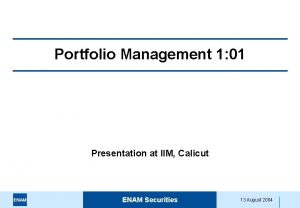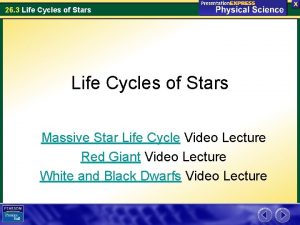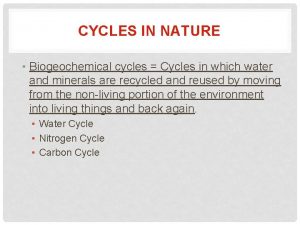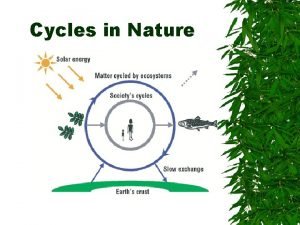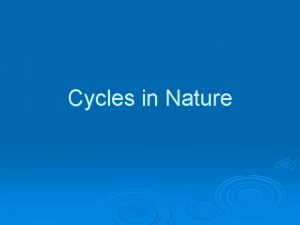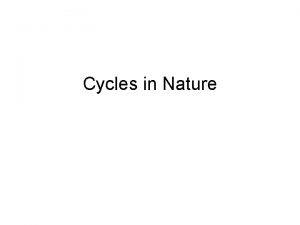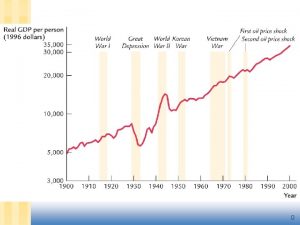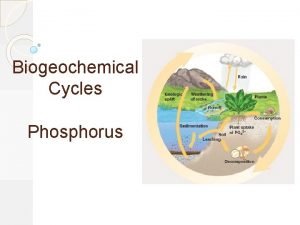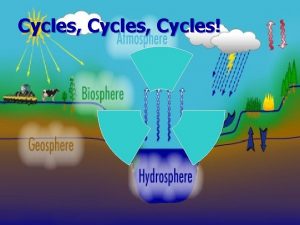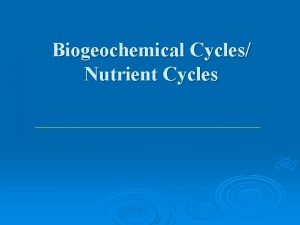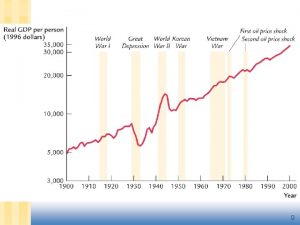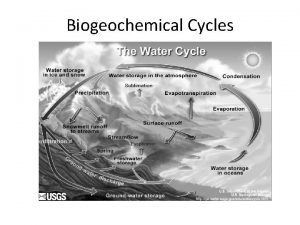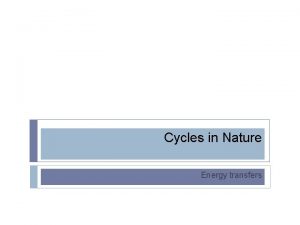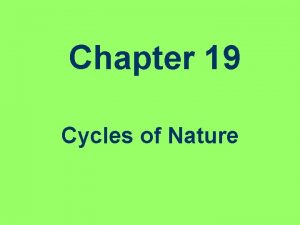Cycles in Nature Section 1 The Cycles of














- Slides: 14

Cycles in Nature Section 1: The Cycles of Matter Section 2: Ecological Succession End of Slide Copyright © by Holt, Rinehart and Winston. All rights reserved.

Section 1 The Cycles of Matter Objectives • Diagram the water cycle, and explain its importance to living things. • Diagram the carbon cycle, and explain its importance to living things. • Diagram the nitrogen cycle, and explain its importance to living things. End of Slide Copyright © by Holt, Rinehart and Winston. All rights reserved.

Section 1 The Cycles of Matter The Water Cycle • How Water Moves During evaporation, the sun’s heat causes water to change from liquid to vapor. In the process of condensation, the water vapor cools and returns to a liquid state. The water that falls from the atmosphere to the land oceans is precipitation. • Water and Life Without water, there would be no life on Earth. All organisms, from bacteria to animals and plants, are composed mostly of water. End of Slide Copyright © by Holt, Rinehart and Winston. All rights reserved.

Section 1 The Water Cycle Copyright © by Holt, Rinehart and Winston. All rights reserved.

Section 1 The Water Cycle Copyright © by Holt, Rinehart and Winston. All rights reserved.

Section 1 The Cycles of Matter The Carbon Cycle • Photosynthesis and Respiration Photosynthesis is the basis of the carbon cycle. During photo-synthesis, plants use carbon dioxide from air to make sugars. Carbon returns to the environment through respiration. • Decomposition and Combustions The breakdown of substances into simpler molecules is called decomposition. Combustion is the process of burning a substance, such as wood or fossil fuels. Decomposition and combustion of organic matter releases carbon dioxide into the atmosphere. End of Slide Copyright © by Holt, Rinehart and Winston. All rights reserved.

Section 1 The Carbon Cycle Copyright © by Holt, Rinehart and Winston. All rights reserved.

Section 1 The Carbon Cycle Copyright © by Holt, Rinehart and Winston. All rights reserved.

Section 1 The Carbon Cycle Copyright © by Holt, Rinehart and Winston. All rights reserved.

Section 1 The Cycles of Matter The Nitrogen Cycle • Converting Nitrogen Gas About 78% of the Earth’s atmosphere is nitrogen gas. Most organisms cannot use nitrogen gas directly. However, bacteria in the soil are able to change nitrogen gas into forms that plants can use. • Passing It On When organisms die, decomposers break down the remains. Decomposition releases a form of nitrogen into the soil that plants can use. Finally, certain types of bacteria in the soil convert nitrogen to a gas, which is returned to the atmosphere. End of Slide Copyright © by Holt, Rinehart and Winston. All rights reserved.

Section 1 The Nitrogen Cycle Copyright © by Holt, Rinehart and Winston. All rights reserved.

Section 1 The Nitrogen Cycle Copyright © by Holt, Rinehart and Winston. All rights reserved.

Section 1 The Nitrogen Cycle Copyright © by Holt, Rinehart and Winston. All rights reserved.

Section 1 The Cycles of Matter Many Cycles • Converting Nitrogen Gas Other forms of matter on Earth also pass through cycles. Many of the minerals that living cells need, such as calcium and phosphorous, are cycled through the environment. End of Slide Copyright © by Holt, Rinehart and Winston. All rights reserved.
 Enam securities portfolio
Enam securities portfolio Section 26.3 life cycles of stars
Section 26.3 life cycles of stars Nature and nature's law lay hid in night meaning
Nature and nature's law lay hid in night meaning Determinace lidské psychiky
Determinace lidské psychiky Hình ảnh bộ gõ cơ thể búng tay
Hình ảnh bộ gõ cơ thể búng tay Frameset trong html5
Frameset trong html5 Bổ thể
Bổ thể Tỉ lệ cơ thể trẻ em
Tỉ lệ cơ thể trẻ em Voi kéo gỗ như thế nào
Voi kéo gỗ như thế nào Tư thế worms-breton
Tư thế worms-breton Chúa yêu trần thế alleluia
Chúa yêu trần thế alleluia Các môn thể thao bắt đầu bằng tiếng chạy
Các môn thể thao bắt đầu bằng tiếng chạy Thế nào là hệ số cao nhất
Thế nào là hệ số cao nhất Các châu lục và đại dương trên thế giới
Các châu lục và đại dương trên thế giới Công của trọng lực
Công của trọng lực
